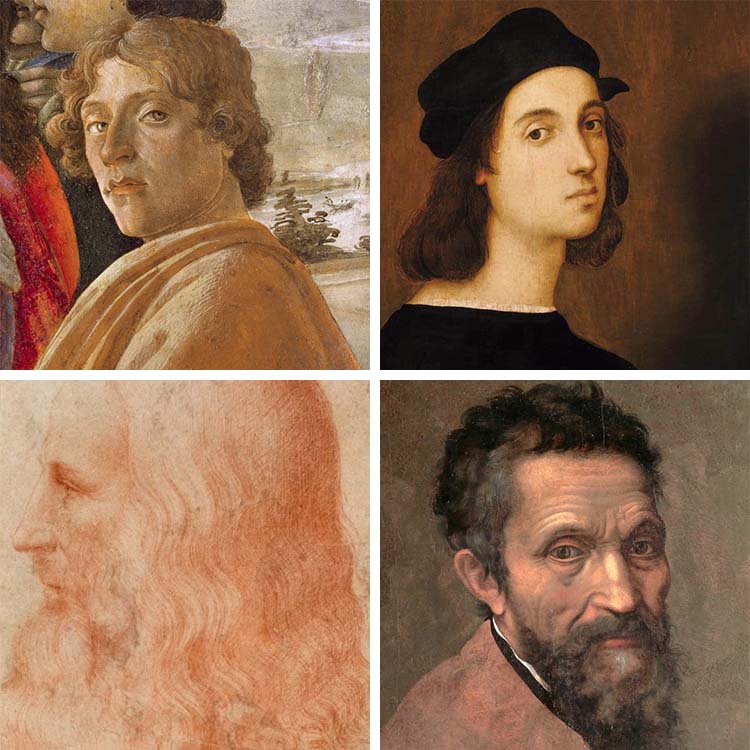
Viewed as a much-needed revival of art and culture, the Renaissance played a pivotal role in ushering Europe out of its Dark Ages and into a world of enlightenment. Beginning in the 14th century and coming to an end in the 17th, this “golden age” swept the continent, culminating in two distinctive yet unified art movements: the Italian Renaissance and the Northern Renaissance.
Starting in 1400, the Italian Renaissance reawakened Italy’s interest in classical antiquity. Though it influenced and inspired the Northern Renaissance, many artists based north of the Alps—namely, in Flanders and the Netherlands—were already embracing humanism and secular subject matter in the 14th century.
While numerous figures shaped both the Italian and the Northern Renaissance, today, a select few are particularly praised for their contributions to Europe’s “golden age.” Here, we present 10 famous Renaissance artists and take a look at their most well-known masterpieces.
Learn about 10 famous Renaissance artists who shaped art history.
Famous Italian Renaissance Artists
Sandro Botticelli (1445–1510)
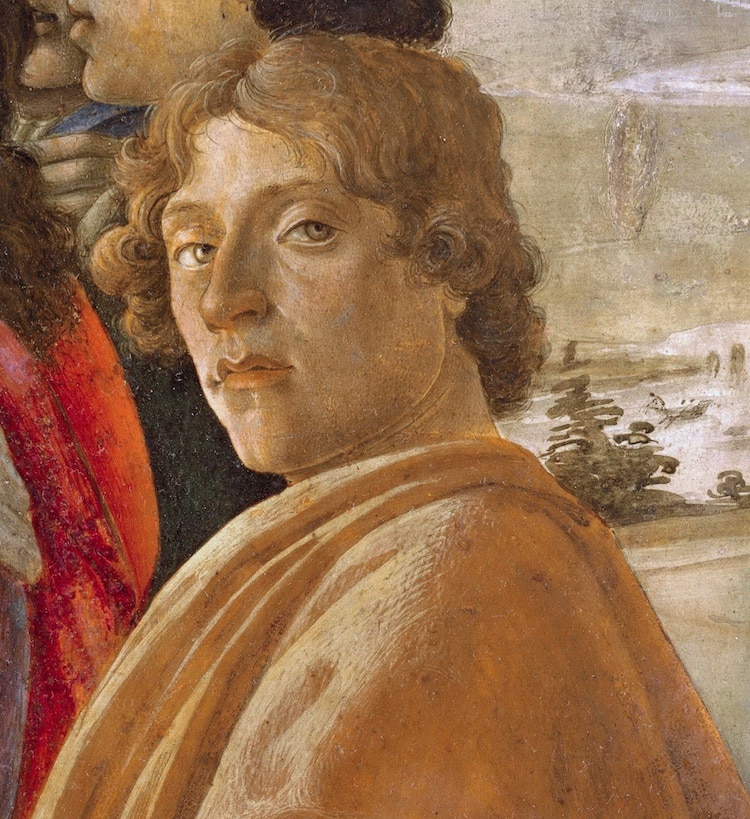
Self-portrait of Sandro Botticelli from his painting “Adoration of the Magi,” c. 1476 (Photo: Uffizi via Wikimedia Commons, Public domain)
Alessandro di Mariano di Vanni Filipepi (1445–1510), known as Sandro Botticelli, was a painter of the Florentine School. Though he dabbled in small, secular portraiture and religious depictions, he primarily painted large-scale scenes of Greek mythology—most notably the Birth of Venus and Primavera. While these pieces are regarded as some of the most famous Renaissance paintings, they were novel at the time of their creation due to their size and allegorical subject matter.
Famous works of art: Birth of Venus (c. 1486), Primavera (c. 1477–82)
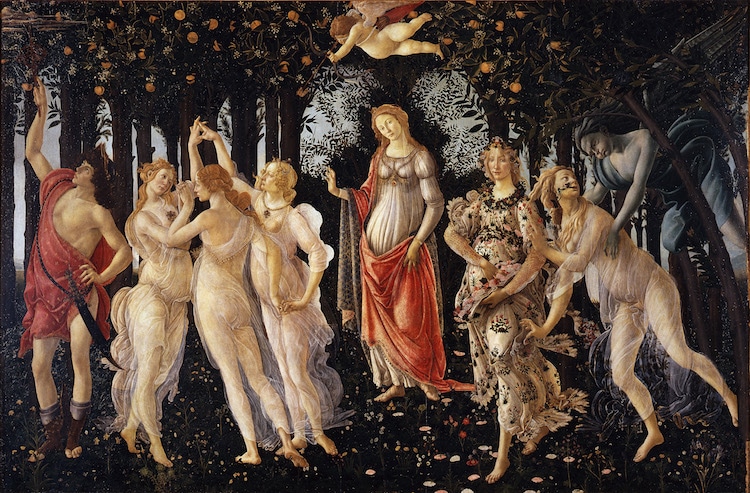
Sandro Botticelli, “Primavera,” c. 1482 (Photo: Google Art Project via Wikimedia Commons, PD-US)
Leonardo da Vinci (1452–1519)
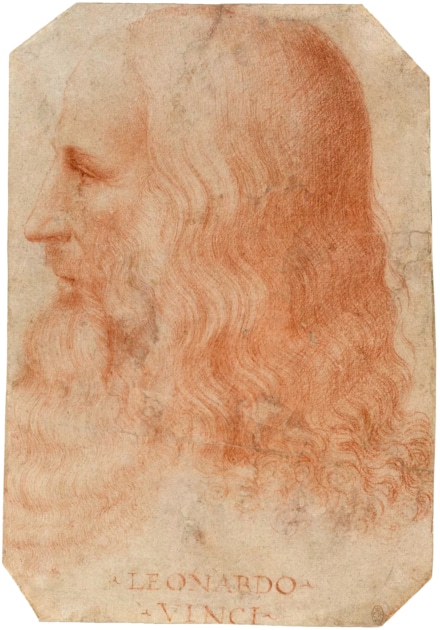
Portrait of Leonardo da Vinci, attributed to Francesco Melzi, c. 1515–17 (Photo: Royal Collection via Wikimedia Commons, Public domain)
Often referred to as a “Renaissance man,” Leonardo da Vinci (1452–1519) specialized in a myriad of practices, from engineering, invention, and science to drawing, painting, and architecture. While countless well-known works compose his body of work, his mysterious Mona Lisa—an oil portrait of a seated female figure with a slight smile—is arguably his most famous painting. Like many other artists of his time, he also painted religious depictions, including the recently restored The Virgin and Child with St. Anne, as well as a self-portrait titled Portrait of a Man in Red Chalk.
Famous works of art: Lady With an Ermine (1489–91), Vitruvian Man (c. 1492), The Last Supper (1498), Mona Lisa (1503–1516)
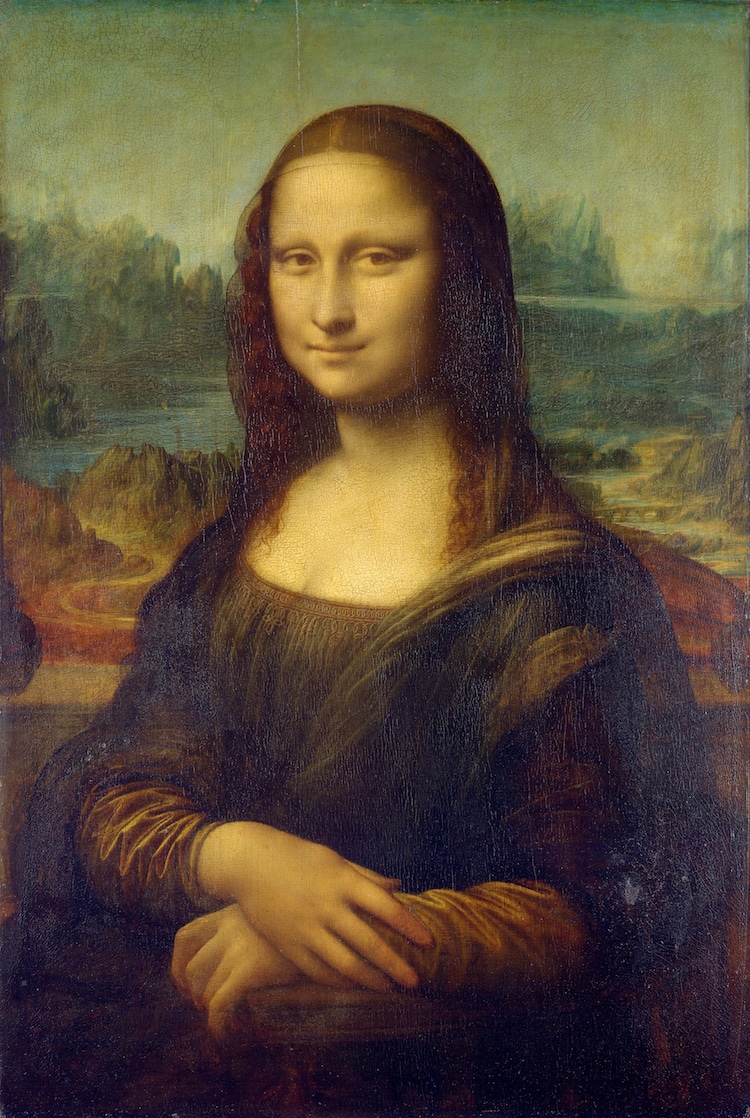
Leonardo da Vinci, “The Mona Lisa,” c. 1506 (Photo: Galerie de tableaux en très haute définition via Wikimedia Commons, PD-1923)
Michelangelo (1475–1564)
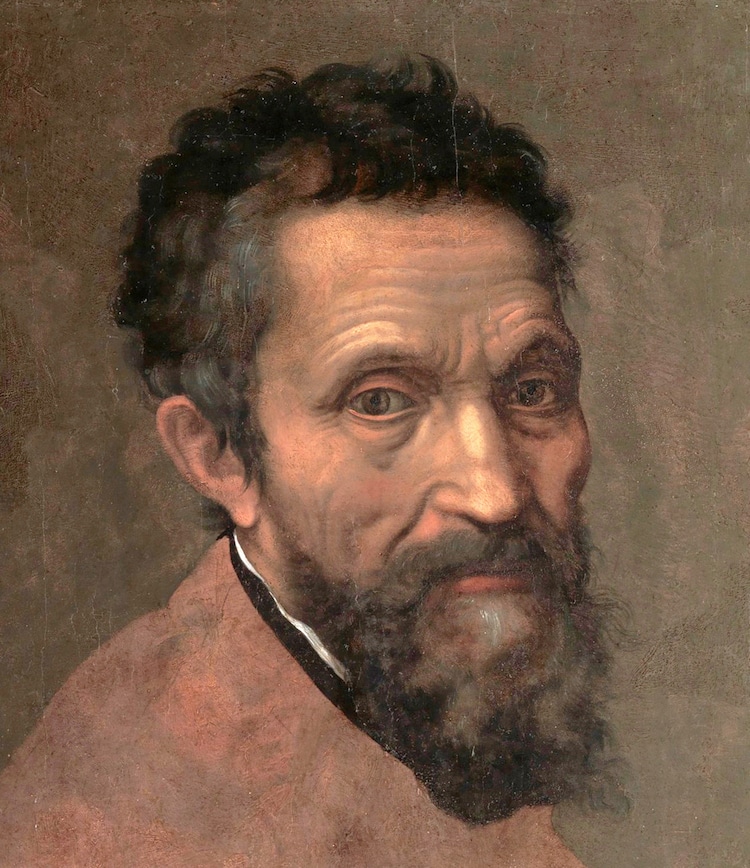
Portrait of Michelangelo, attributed to Daniele da Volterra, c. 1545 (Photo: Metropolitan Museum of Art via Wikimedia Commons, Public domain)
Renowned for his attention to detail and his knowledge of human anatomy, Michelangelo di Lodovico Buonarroti Simoni is celebrated as one of history’s finest sculptors. During his lifetime (1475–1564), the Florentine artist created several marble masterpieces admired for their lifelike aesthetic. These works include the iconic David statue housed in Florence’s Galleria dell’Accademia, the monumental Pieta in the Vatican, and his series of Dying Slaves located in the Louvre.
In addition to sculpting, Michelangelo was also skilled in architecture, poetry, and painting. He is most often associated with his frescoes, like the Sistine Chapel ceiling and the adjacent painting, The Last Judgment, which have been regarded as masterpieces for centuries.
Famous works of art: Pietà (1498–99) David ( 1501–4), Sistine Chapel ceiling (1508–12), Dying Slave (1513–1516)
Giorgione (c. 1470s–1510)
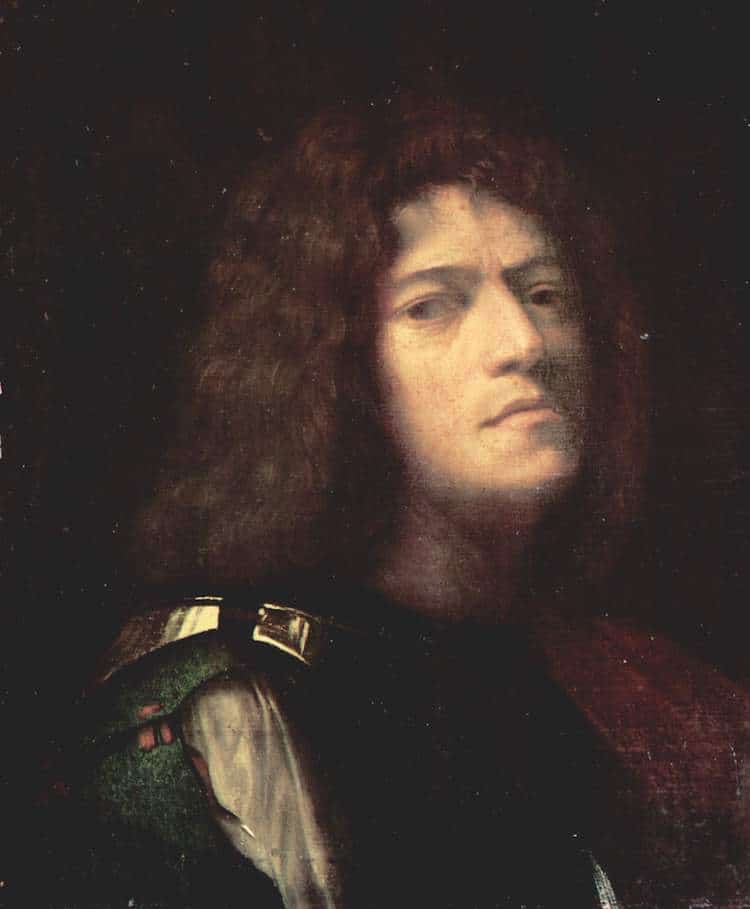
Giorgione, Possible self-portrait as David, c. 1508 (Photo: Herzog Anton Ulrich Museum via Wikimedia Commons, Public domain)
Although Giorgione (c. 1470s–1510) only lived until his 30s, he had a major impact on the Venetian School. As a student of the Bellini brothers and a contemporary of Titian, he was surrounded by creative inspirations. His six surviving paintings feature atmospheric coloring, poetic qualities, and mysterious narratives. Additionally, Giorgione’s most famous work, The Tempest, has been described as the first landscape in history due to the unprecedented prominence of the Italian countryside.
Famous works of art: The Tempest (c. 1508)

Giorgione, “The Tempest,” c. 1506 (Photo: Wikimedia Commons, Public domain)
Raphael (1482–1520)
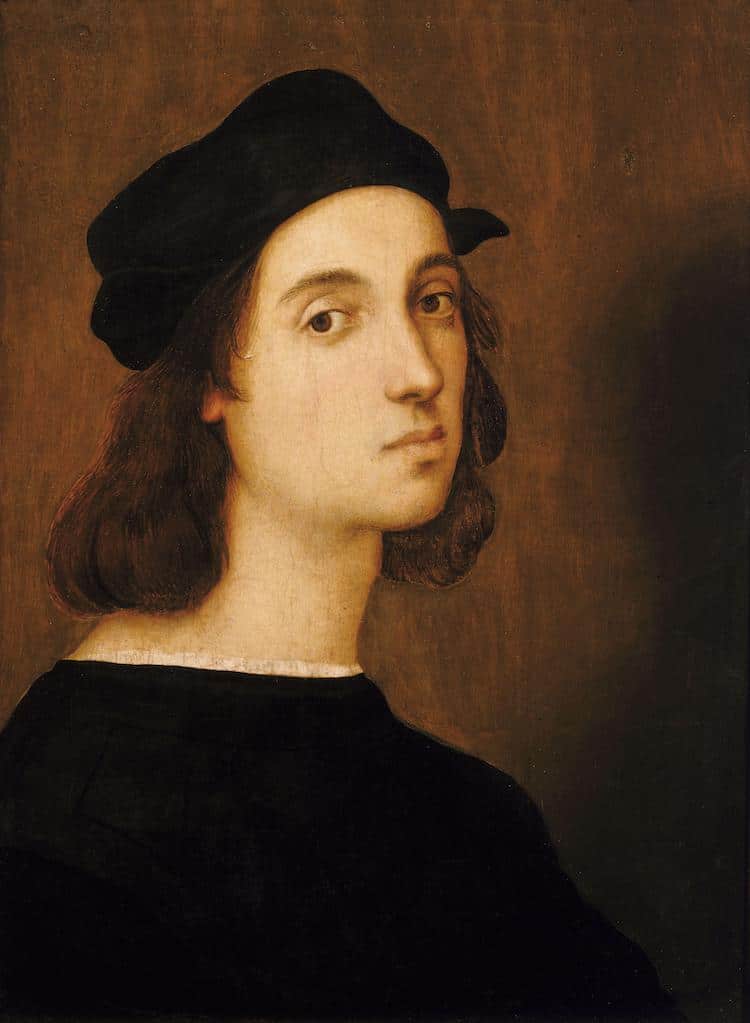
Raphael, “Self Portrait,” 1504–1506 (Photo: Wikimedia Commons, Public domain)
Raffaello Sanzio da Urbino, or Raphael (1482–1520), is held today as a master of form and composition. Although he died at just 37 years old, the Italian architect and painter left behind a vast body of work. He is primarily known for his Madonna paintings, including his vivid Madonna in the Grass, as well as other religious depictions, like his dramatic Transfiguration.
Like Michelangelo, his contemporary, Raphael also produced frescoes for the Vatican. The School of Athens, the most well-known piece of this kind, celebrates philosophy, as it features great Greek minds like Aristotle, Plato, and Ptolemy. The School of Athens is one of four murals by Raphael that depict the main branches of knowledge, which also include poetry, theology, and law.
Famous works of art: Wedding of the Virgin (1504), School of Athens (1511), The Transfiguration (1520)
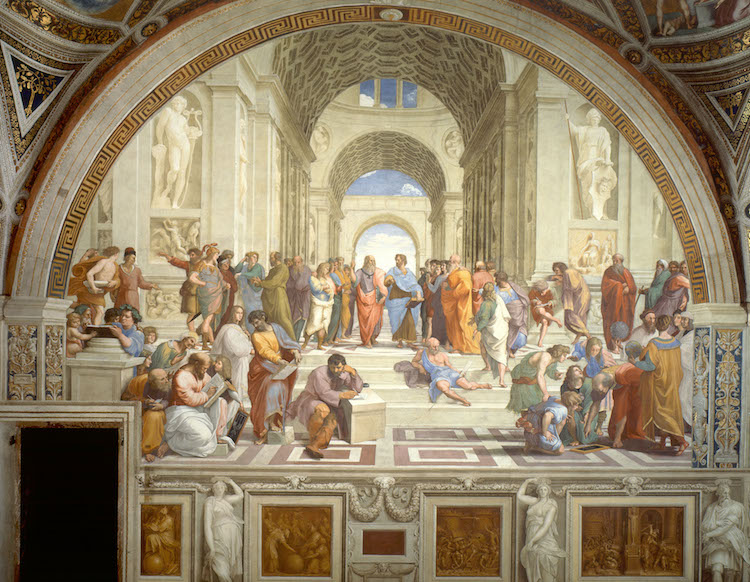
Raphael, “The School of Athens,” 1511 (Photo: Vatican Museums via Wikimedia Commons, PD-US)
Titian (c. 1488–1576)
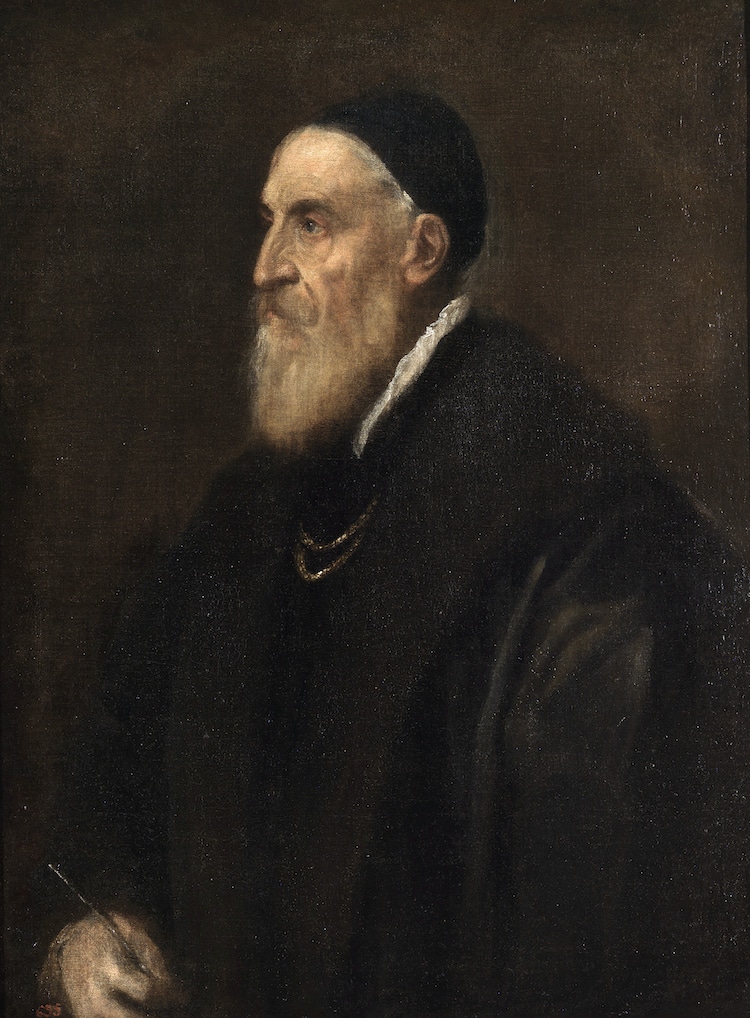
Titian, “Self-Portrait,” circa 1562 (Photo: Wikimedia Commons, Public domain)
After the death of Giorgione in 1510 and Giovanni Bellini in 1516, Titian was the leading upholder of the Venetian style. Slowly, however, Titian began to leave behind the styles of his tutors and fulfill his own artistic vision. Likewise, Titian’s fame and popularity as a painter grew, and among the star-studded list of clients were doges, kings, princes, duchesses, popes, cardinals, and fellow artists. Titian achieved equal success to Michelangelo and even obtained the Freedom of the City when he visited Rome in 1546.
Famous works of art: Bacchus and Ariadne (1520–1523), Venus of Urbino (1538), Rape of Europa (1560–1562)
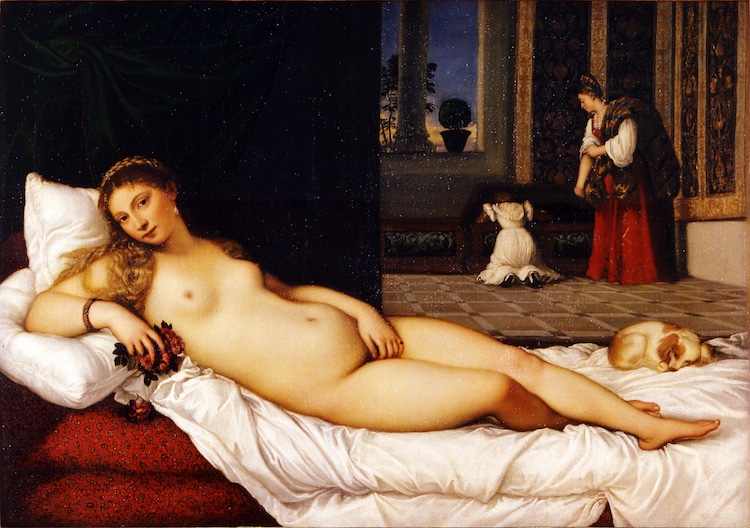
Titian, “Venus of Urbino,” 1538 (Photo: Wikimedia Commons, Public domain)
Famous Northern Renaissance Artists
Jan van Eyck (c. 1390–1441)
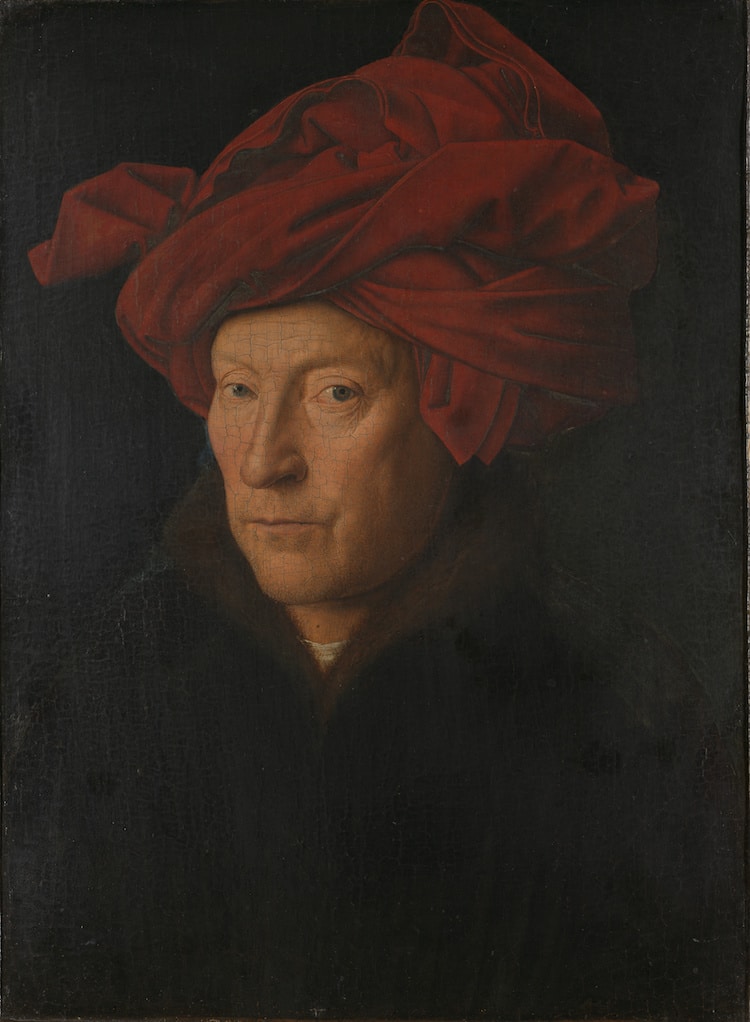
Jan Van Eyck, “Self-Portrait,” 1433 (Photo: National Gallery via Wikimedia Commons, Public domain)
Bruges-based painter Jan van Eyck (c. 1390–1441) was an Early Netherlandish painter and a key figure of the Northern Renaissance. Though only 20 paintings are attributed to the artist, his work is among the most well-known Dutch art. Like other Netherlandish artists, van Eyck had an eye for detail and a knack for naturalism, evident in oil paintings like The Arnolfini Portrait—so detailed that it features a hidden self-portrait—and the Lucca Madonna.
On top of his works on canvas, van Eyck is also celebrated for his Ghent Altarpiece. A wooden piece with many panels, the Ghent Altarpiece features richly painted scenes from the Old and New Testaments. The masterpiece has been housed in St. Bavo’s Cathedral, a Gothic church in Ghent, since 1432.
Famous works of art: The Ghent Altarpiece (c. 1430–1432), The Arnolfini Portrait (1434)
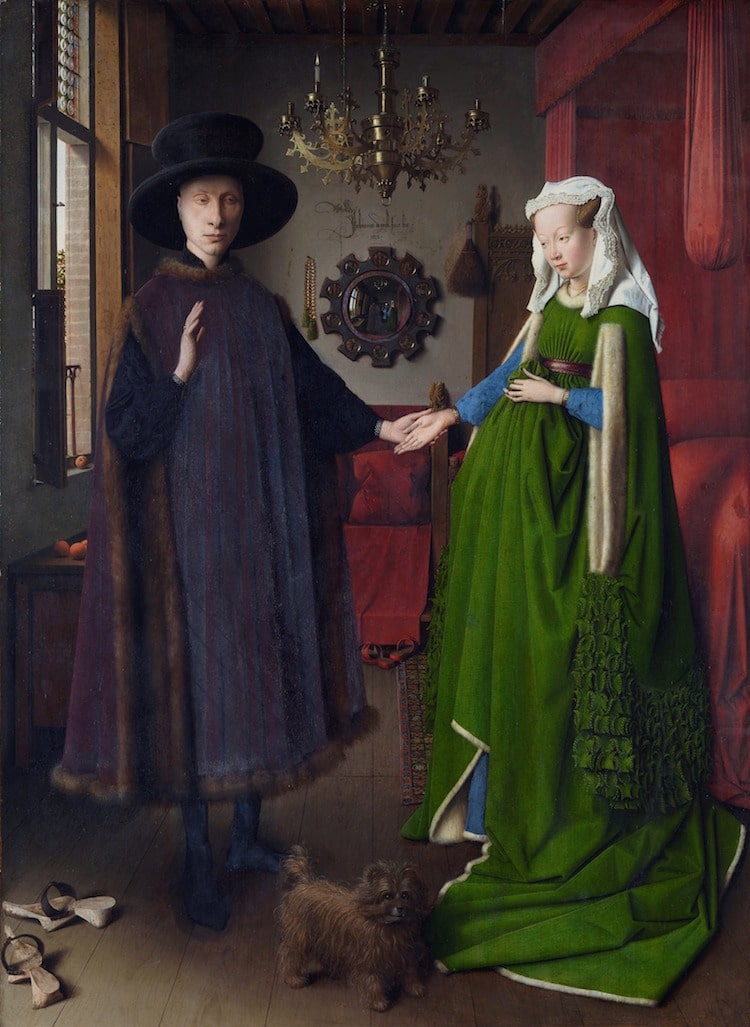
Jan Van Eyck, “The Arnolfini Portrait,” 1434 (Photo: National Gallery UK via Wikimedia Commons, PD-US)
Hieronymus Bosch (c. 1450–1516)
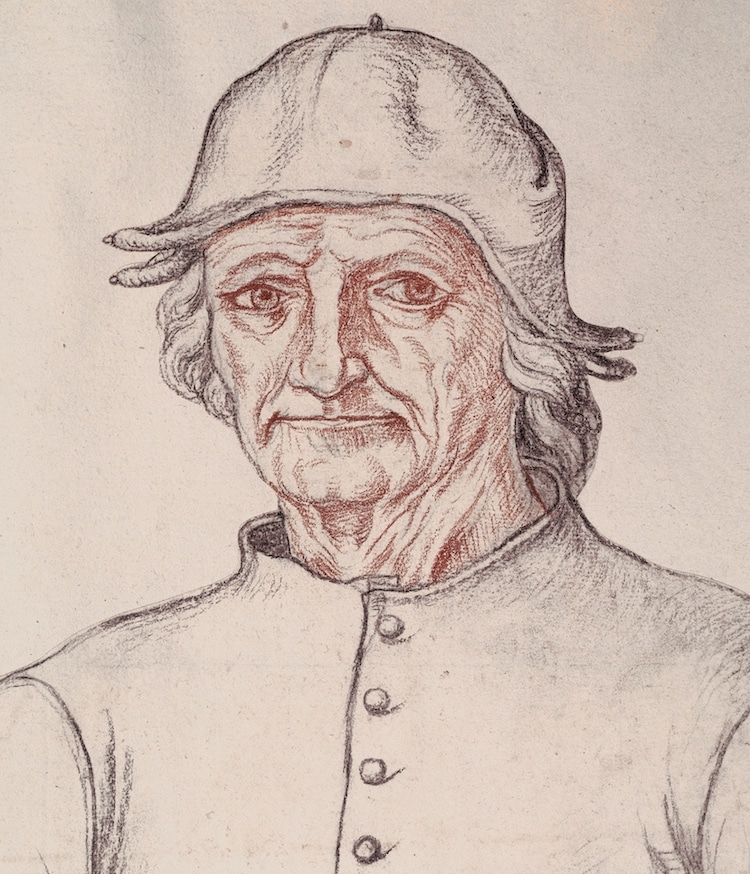
Jacques Le Boucq, Posthumous portrait of Hieronymus Bosch, c. 1550 (Photo: Wikimedia Commons, Public domain)
Dutch draughtsman, painter, and master of the triptych Hieronymus Bosch (c. 1450–1516) is known for his narrative-rich panel paintings that feature iconography ranging from whimsical to grotesque. Rendered in intricate detail, his most famous pieces, The Garden of Earthly Delights, The Last Judgment, and The Temptation of Saint Anthony, each mix a menagerie of surreal creatures with lesson-laden Biblical themes.
Famous works of art: The Garden of Earthly Delights (c. 1480–1505), The Last Judgment (1482–1516)
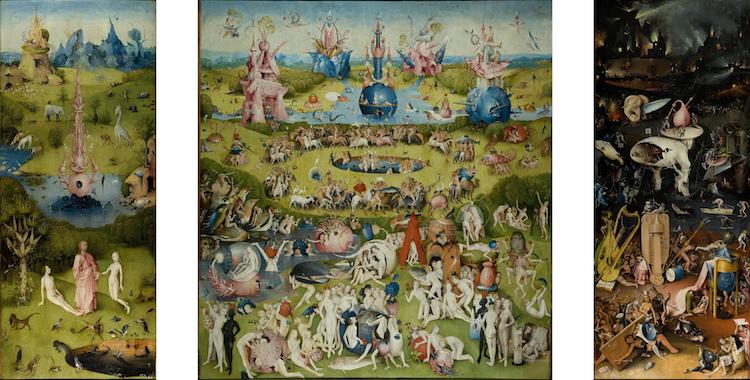
Hieronymus Bosch, “The Garden of Earthly Delights,” c. 1480–1505 (Photo: The Prado in Google Earth via Wikimedia Commons, PD-US)
Pieter Bruegel the Elder (c. 1525–1569)
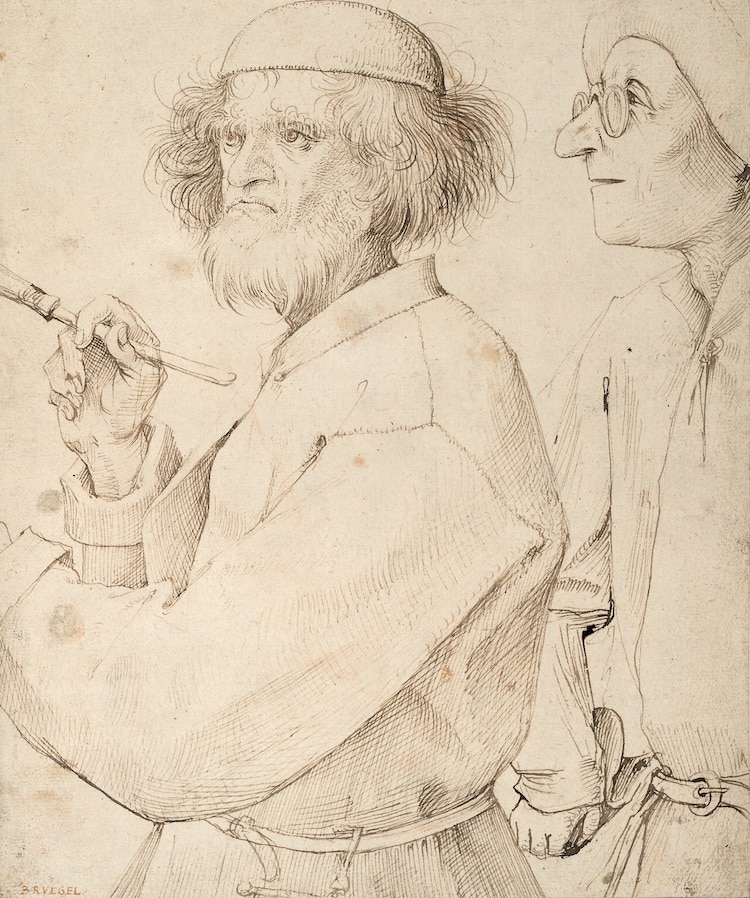
Pieter Bruegel the Elder, “The Painter and the Buyer,” possible self-portrait of the artist, c. 1566 (Photo: Albertina via Wikimedia Commons, Public domain)
Today, painter and printmaker Pieter Bruegel the Elder (c. 1525–1569) is regarded as the master of Dutch and Flemish Renaissance art. With a penchant for painting scenes of lower-class life—evident in Netherlandish Proverbs—on top of more common religious iconography (like the tower of Babel) he is esteemed for his unique approach to subject matter. Additionally, his crowded canvases are distinctive for their detail and, with their beautiful backdrops (like the icy peaks in The Hunters in the Snow), their influence on modern landscape painting.
Famous works of art: The Hunters in the Snow (1565), The Tower of Babel (1563)

Pieter Bruegel the Elder, “The Hunters in the Snow,” 1565 (Photo: Google Art Project via Wikimedia Commons, PD-US)
This article has been edited and updated.
Related Articles:
20+ Art History Accessories That Turn Everyday Objects into Masterpieces
Artist Reimagines Elegant Renaissance Sculptures to Show Their Playful Personalities
Disney Princesses Creatively Reimagined as Renaissance Women
